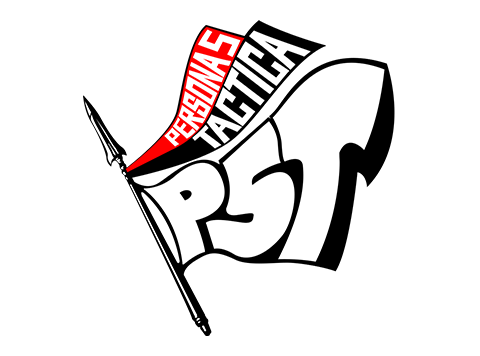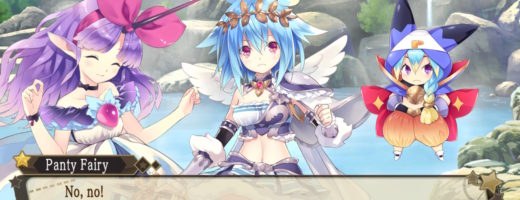Persona 5 Tactica Review
Chibi Revolution
The Persona 5 universe keeps expanding. Three years after the release of the Persona 5 Royal enhanced version and two years after hack-and-slash sequel Persona 5 Strikers, the Phantom Thieves are back in Persona 5 Tactica. This strategy RPG brilliantly adapts the staples of the series to its outstanding battle system while telling another heroic tale of the Phantom Thieves. With chibi visuals, an electrifying soundscape, and a compelling story, Persona 5 Tactica will please fans of the series while being a friendly starting point for newcomers.
Persona 5 Tactica begins when protagonist protagonist Joker and the other Phantom Thieves, who can change people’s hearts by stealing treasures from metaphysical manifestations called Palaces, are hanging at their hideout. After watching the news on the TV about politicians, the heroes are taken inside the Metaverse. However, their past experience of exploring Palaces doesn’t aid them in this unfamiliar version of it, and they have to learn how to defend themselves all over again. They need to do it quickly, but shortly after arriving in the “Kingdom”, they come across an evil ruler who manages to defeat the party. Fortunately, they meet two characters called Erina and Toshiro with whom they join forces to fight against this common enemy. This premise blends perfectly with the earlier adventures of the Phantom Thieves since rebellion and fighting back against power is almost part of their DNA. The story is full of touching moments that manage to keep players captivated throughout the whole game.
All of the game’s events take place shortly before the ending of Persona 5, yet being aware of those events or any other prior knowledge of the story is not needed to enjoy and understand this new set of events as the most important things are satisfactorily explained. Nevertheless, those who played the original game will appreciate the subtle references that are cleverly introduced throughout the whole game and that make some moments even more impactful.
The Kingdom serves as a refreshing setting by bringing something distinct narratively and visually from what was presented in the previous entries while still feeling like part of the same universe. The new antagonists are foes that genuinely propel the heroes to try to stop them, and all the secondary and supportive characters are also good inclusions. The backstories of the new main characters Toshiro and Erina are very intriguing and brilliantly planned. This time around the story does not revolve around the Phantom Thieves themselves; they serve more as vigilantes of the Metaverse and mentors to Toshiro and Erina, igniting the hearts of these new characters as they help them get rid of the evil that torments them. Erina is a warrior who leads the rebel cause and knows the Kingdom very well, while Toshiro is a highly interesting politician that was dragged into this world just as the Phantom Thieves were. The past of these two characters is revealed piecemeal to keep players wanting to get to the next story beat and is the core of a delightful story about revolution and vindication.
The game is divided into moments where the heroes are at their hideout planning their next move and others where they are completing missions to defeat their enemies and help the Phantom Thieves return to their world. While missions are grid-based battles that are compulsory to advance, there are also optional quests that can be completed. These fifteen optional quests have very specific win conditions and grant players nice rewards such as unlocking new Personas to fuse or new skills for their fighting characters. Taking on these quests is also very satisfactory as completing them is not always easy and really makes players plan their actions and master combat in order to be victorious. At the hideout, Joker and his friends can also buy weapons, replay past missions, and visit the Velvet Room. All these activities give players a needed break from battling and allow them to customize their party. Unfortunately, there are few ways to personalize the Phantom Thieves as many elements have been simplified, such as ranged weapons being the only piece of equipment. This simplicity, however, fits the mechanics and 30-hour adventure neatly.
Personas are dropped by enemies at the end of the battle, so it is relatively easy to get most of them. The ones that are not dropped can be fused in the Velvet Room either with two-demon fusion or with special fusion, which requires three or more demons. The Velvet Room also includes a new feature that allows players to sacrifice demons in exchange for very powerful weapons that cannot be purchased. All party members can equip a secondary persona, which enhances their stats and enables them to have more skills at their disposal. Demons have two slots for skills, which include passive abilities or skills that can be used in battle. Another new feature is the use of skill points that are received after having some conversations or completing battles. By spending these points, players can improve the power of the skills of their fighters or the amount of HP and SP that they recover after certain actions. All these mechanics are exactly what the game needs to power up the star of the show that is the battle system.
Persona 5 Tactica’s battle system adapts the use of skills, guns, and melee attacks masterfully, as well as making the One More system the core of combat. The main ideas of the system are to down enemies to get an extra action, while finding ways to get them out of cover and attack them while vulnerable. Enemies can also take advantage of these tactics, making it important to learn where to leave units and look for spots in the battlefield where units are not exposed. After downing an enemy, players can also unleash a powerful all-out-attack where all allies join to deal a devastating attack to all the foes that are within their range. It is impressive how these mechanics were adapted because they work so well in this grid-based battle system that they seem to have been created for this type of combat.
During their turn, players can move all of their characters depending on their movement range, with each also able to perform an action. Units can be moved several times during a turn if they have not yet performed an action. This helps in situations where players need to activate switches that open doors or move platforms, enabling their combatants to reach other parts of the map without needing to wait another turn. Quests that have win conditions such as defeating all enemies in one turn force players to learn how to exploit this unit moving management and the One More mechanic, which is highly rewarding in the end.
The active party members have melee, ranged attacks, and skills at their disposal. While ranged attacks are useful when enemies are far away, melee abilities and some skills can move enemies to other squares in the grid. In lieu of elemental weaknesses, skills instead apply effects such as shocking, confusing or moving enemies. Persona 5’s Baton Pass is also adapted into Tactica, allowing players to replace units when their HP reaches zero with another character, up to three times per battle. Missions have additional rewards if they are completed with some conditions, and creativity is encouraged since there are several ways to beat them. Battling never gets boring or becomes repetitive even when enemy units are almost always the same. All party members, even those who did not participate in battle, receive experience, allowing players to use their favorite characters without worrying about combatants being underleveled.
The musical score includes some tracks from the original game plus new music. The jazzy vibe continues, with distorted guitars and female vocals being the highlights in most tracks. The soundscape includes tasty riffs and exciting melodies that make battling and cutscenes more spectacular and impactful. Vocalist Lyn returns to create more memorable songs with her iconic voice, ultimately making the soundtrack feel like a continuation of the other games. The key voice actors from Persona 5 are back to delight players once more, with Cassandra Lee Morris as Morgana being one that stands out, as well as Leeanna Albanese and MacLeod Andrews who give life to Erina and Toshiro respectively.
The game sets itself apart from its brethren by using chibi visuals, which works great for the game. The Kingdom and its inhabitants have very distinctive designs that make them look different from those of previous games, helping with the narrative idea that they are taken into a new place. The exaggerated designs also help units in the battlefield to be easy to discern while having great animations.
Persona 5 Tactica offers a captivating tale in a really cute world. The game is solid in every aspect, but the battle system and the soundscape are undoubtedly where the game shines brightest. The simpler mechanics may be initially dismaying for veterans of the series, but they fit the game nicely once the player gets used to them. Persona 5 Tactica is an easy recommendation for both fans of the series, while newcomers who want to dip their toes into its stylings will find it very welcoming.
Disclosure: This review is based on a free copy of the game provided by the publisher.


Fantastic combat
Excellent soundscape
Captivating story
Few ways to customize characters
Lack of enemy variety









Recent Comments